A book to read: Caroline Little House, Revisited
While I read and loved all the LITTLE HOUSE books as a child, I’m not a super-fan. I’ve never seen the TV show, I’ve never re-read the books as an adult. But I do still remember them. Details about prairie fires and Pa getting lost in snowstorms, and treks on covered wagons have lodged themselves in my imagination.
I picked up the book CAROLINE: LITTLE HOUSE, REVISITED as a audio set of CDs at my library, because my car is almost as old as a covered wagon (2006) and therefore still has a CD player. Have you ever heard of anything so quaint?
CAROLINE is the LITTLE HOUSE ON THE PRAIRIE book, but told from Ma’s perspective instead of little Laura’s. The book details the family’s move from Wisconsin to Kansas in the 1870s. Once in Kansas, the family settles on the prairie and somehow manages to stay alive.
The book was fine. I guess.
It was well written, with the same delightful down-home historical details that I remember from the kids books. But after spending a summer reading about the 19th century lives of Annabel and Margaret and Rose, Ma was a little, well…
Boring.
She refused to let herself feel ANYTHING. Literally zero emotions were allowed. If a smile crept up in her face she’d bite it back. Every fear, annoyance, swell of love, or twinge of morning sickness that manifested in her body had to be immediately tamped down. While that may (?) have been the state of things for prairie women 100 years ago, it makes for a frustrating read.
Also, Pa was just so perfect in every perfect manly way. I’m usually fine with reading about perfect manly men (I’m an OUTLANDER fan for goodness sake. I DEFINITELY watch those TV shows and Jaime Fraser is the King of Men), but the sheer amount of husband worship going on inside Ma’s head seemed rather unbelievable, especially during and after pregnancy. Does anyone know anyone who worshipped her husband post-partum? I doubt it.
And the way the Osage were discussed in the book made me cringe. As in the Little House books1, Ma was terrified of Native Americans and quite anxious for them to “move on.” While I understand that was the vibe amongst white prairie ladies at the time, it’s rough to read about the abject fear/hatred/racism in a book that was written in 2017. The Author’s Note at the end gives some appropriate context, and critiques the original book for unfairly blaming the Osage for forcing the Ingalls off their land2, but it doesn’t take away from the ick feeling I got while reading (listening).
Okay, that’s enough whining about the book. Lets get to the travel and teaching bits.
A place to explore: Keeper of the Plains and the Mid-America All-Indian Museum
When I went to Kansas last month (via airplane, not covered wagon), I spent my first evening checking out the Keeper of the Plains plaza and statue.
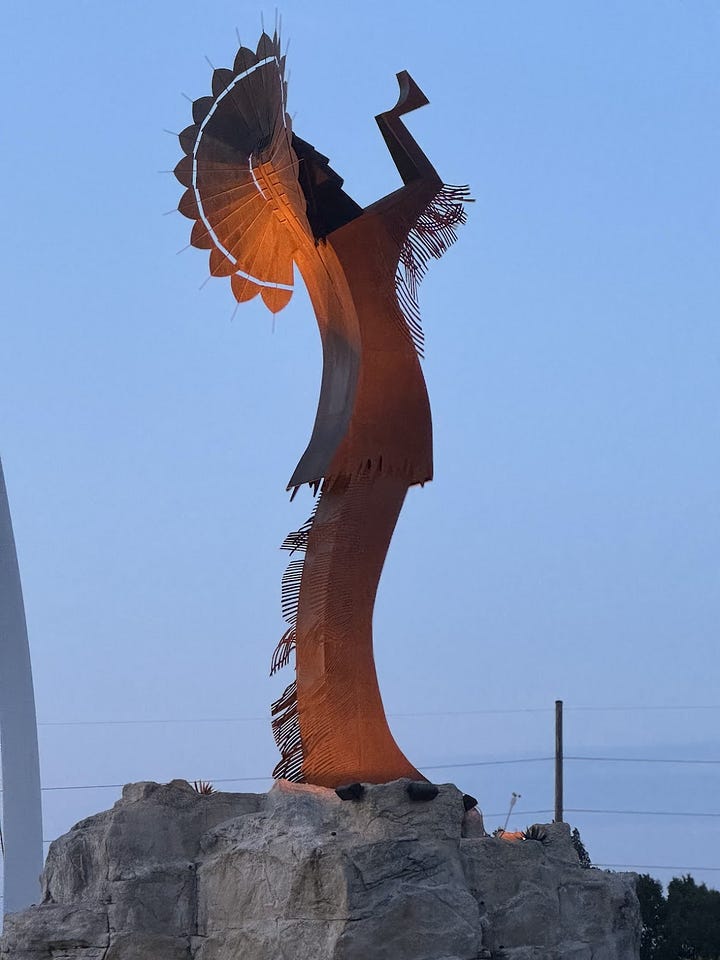
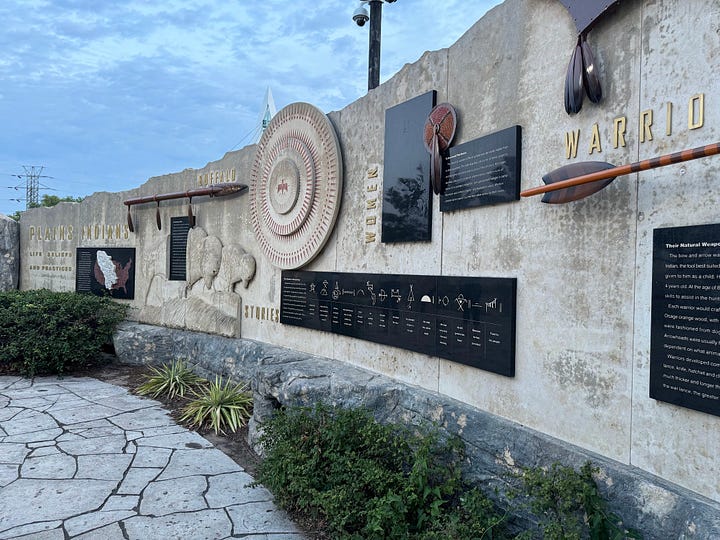
The 44-foot sculpture was created by Native American artist Blackbear Bosin. It stands at the confluence of the Big and Little Arkansas rivers, overlooking downtown Wichita. The plaza around the statue features bits of information about Plains Indians. With it’s footbridges and walking paths along the river, it’s a lovely place to explore at sunset.
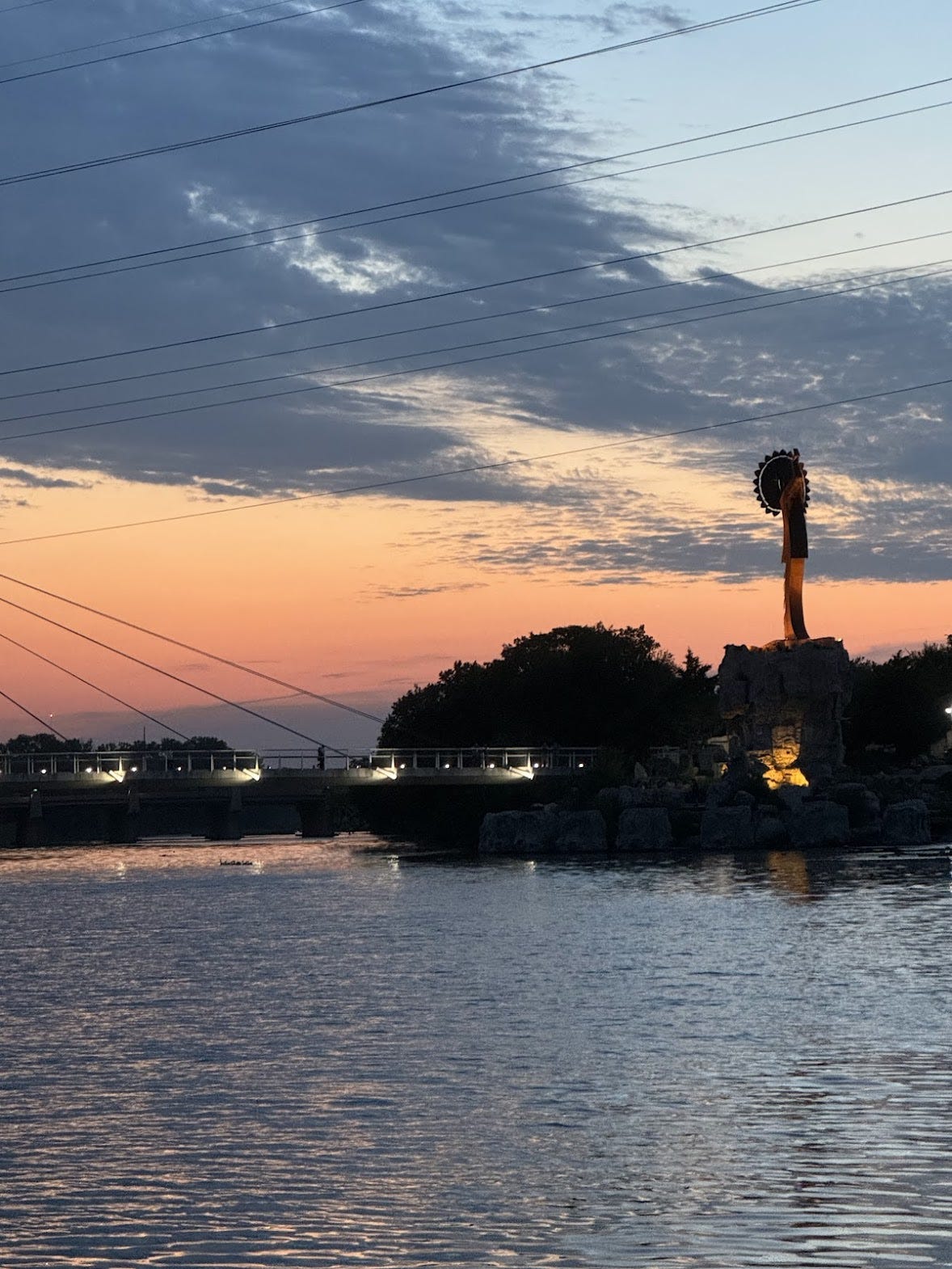
The next day I headed back to the statue to visit the nearby Mid-America All-Indian Museum. The museum features Blackbear Bosin who designed the Keeper of the Plains statue in the 70s. Some of his early sketches of the statue are showcased, which is fun. I always love to see the evolution of a piece of art. Bosin’s cartoons, murals, and paintings are featured here along with other exhibits that rotate quarterly.
The museum doubles as a space for tribes to gather today. The entryway is full of flyers about upcoming events and festivals, and the common room features dozens of photographs of recent celebrations.
To read more about what to see, eat, and do in Wichita, check out my article with Matador Network, who sent me to Kansas along with the Kansas Department of Commerce.
To Teach: Sovereignty & Self-Determination: An Educator Webinar on Contemporary Indigenous Histories
Instead of providing a lesson to teach, I’ll instead provide a webinar to attend.
But wait!
Due to grant funding, educators who attend both the Tuesday, Nov. 12th and Wednesday, Nov 13th 2024 (7:00-8:30 p.m. ET. both nights) will receive a $75 stipend. WooHoo!
Webinar attendees will learn from an Indigenous History scholar, preview engaging short films and explore ready-to-use lessons and interactive resources.
Here is a link to sign up if you are interested. If you can’t make it, I’ll be attending the webinar and hopefully creating some lessons based on what I learn. Stay tuned!
The original Little House books have several dehumanizing depictions of Black Americans and especially Native Americans. There was some talk about changing the books and removing the offensive language. There was pushback to that idea, discussing how revisionist history is also dangerous, and the books should be taught in context instead of being subject to revision. Laura Ingalls Wilder’s name was removed from the ALA Children’s Literature Legacy Award in 2018 book award
It had actually been the fault of a Scandinavian neighbor defaulting on his loan that forced the Ingalls family back north



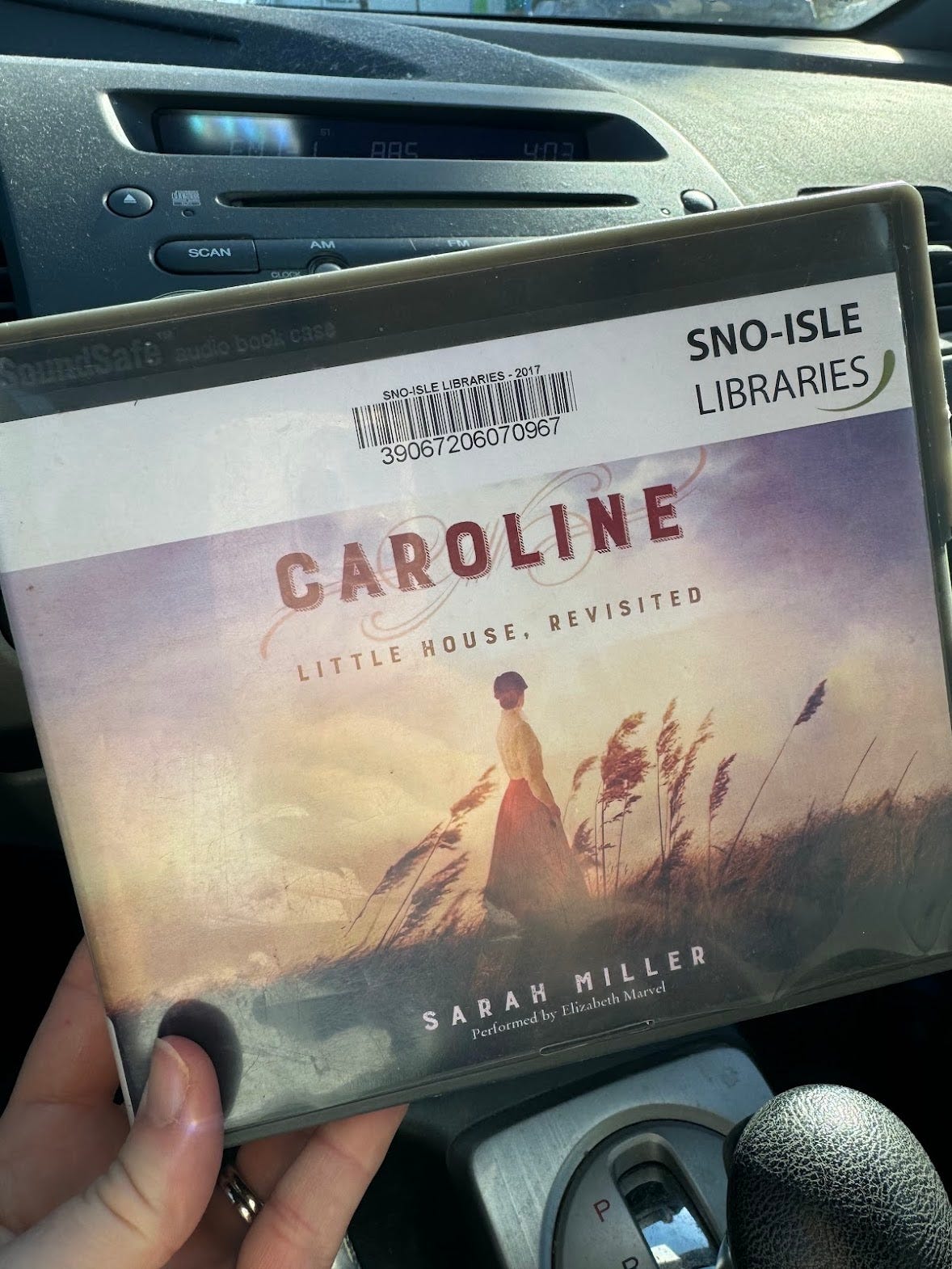
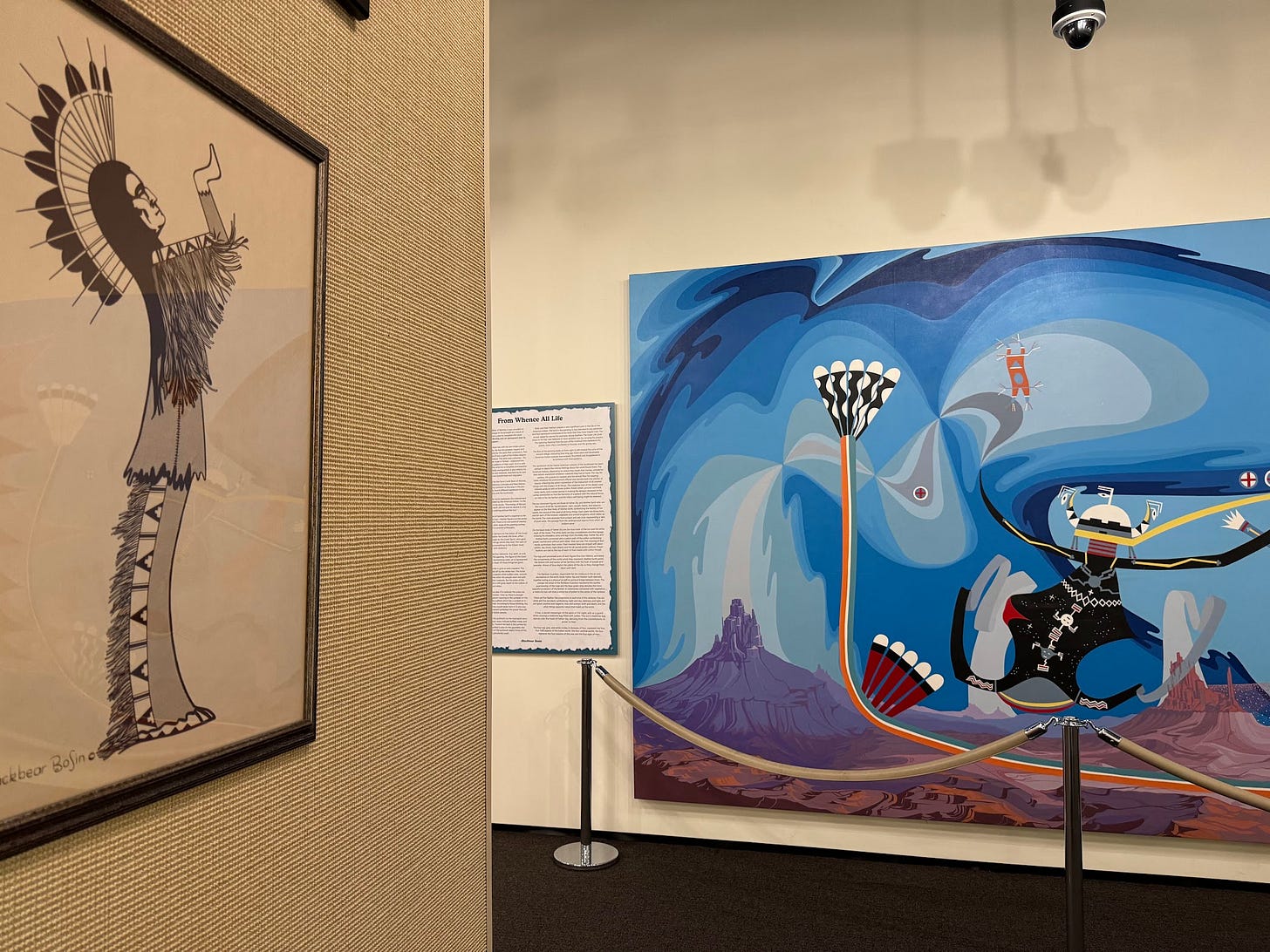
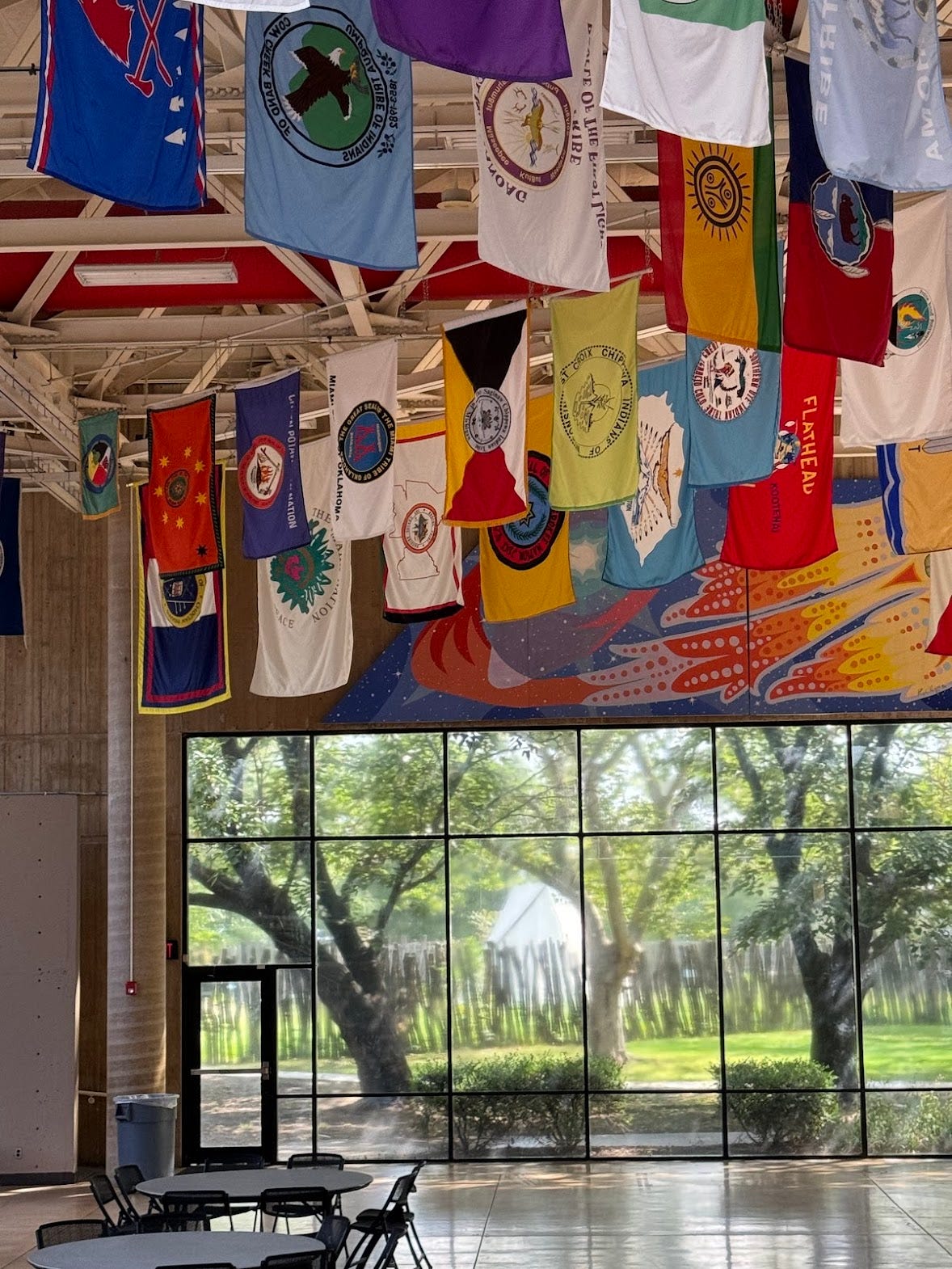
So interesting, Jenna. The museum seems like it places cultural values and narratives front and center. A place I’d love to visit.
I never read the Little House books as a child, have not read them as an adult, and never watched a single episode of the series. Why? No idea, other than a sense that they evaded the truth. It was far more interesting to visit my father’s family homestead in South Dakota and get the real story. The lived experience of the family was present in every sense:
the hardships and joys were evident.
But still. Revisionist removals of books, rather than contextualizing them? As the kids say, I can’t even.
I was absolutely a super fan as a kid; read the books multiple times, watched the show every morning during the summer, played Little House with my friends. I got a set of the books with color illustrations many years ago and read them again, and reading them as an adult was a totally different experience!
Yes, they're extremely racist, but they're also very political. The tone and the politics were heavily influenced by her daughter, Rose (I've gone down long rabbit holes reading about context for the books!). I've been reading them with my oldest and we've been stopping to discuss a lot of the racism and what was happening, which is something she's been really open to discussing and learning about.
It sounds like the book about Ma picked up that politics of it too, with her not feeling anything. The books lean really heavily into the Protestant work ethic and not expressing feelings or complaining about hardships. It's just been very interesting to read as an adult and be horrified by so much in those books that I loved as a kid.